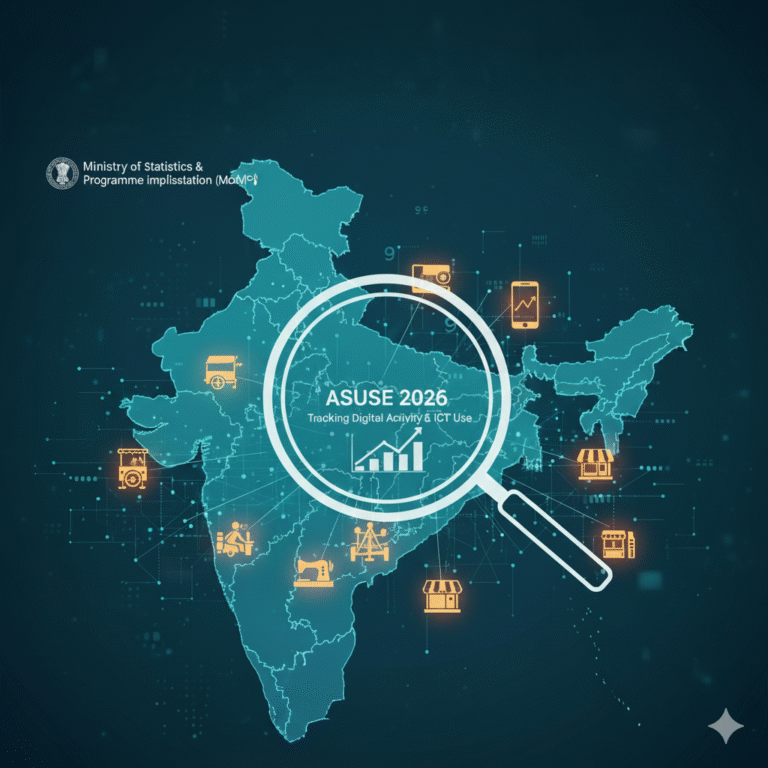
The Himalayan Awakening: Understanding Ladakh’s Crisis
Ladakh, the “Land of High Passes,” has emerged as a focal point of India’s tribal rights discourse following unprecedented violent protests on September 24, 2025. The death of four protesters and injury to over 30 others marked the region’s worst unrest in decades, highlighting deep-seated grievances that have simmered since the abrogation of Article 370 in 2019.
This strategically vital Union Territory, sharing borders with Pakistan and China, houses over 274,000 people with an extraordinary 97% tribal composition—making it one of India’s most tribally homogeneous regions. Yet, unlike northeastern tribal areas, Ladakh lacks constitutional safeguards that protect indigenous rights, land ownership, and cultural identity.
Key Highlights:
- 97% of Ladakh’s population belongs to Scheduled Tribes, comprising eight distinct communities
- September 2025 protests resulted in 4 deaths and 30+ injuries, worst violence in decades
- Graduate unemployment at 26.5% vs 13.4% national average drives youth discontent
- Climate change caused 6.7% glacial retreat in Pangong region (1990-2019)
- 7 lakh tourists in 2023 strain fragile ecosystem and water resources
Historical Context: From Autonomous Hills to Union Territory

The roots of current unrest trace back to Ladakh’s unique administrative journey. Originally part of Jammu & Kashmir, Ladakh achieved autonomous status in 1995 through the Ladakh Autonomous Hill Development Council (LAHDC) Act. This legislation recognized the region’s “distinct regional identity and special problems” due to its “sparse population, vast area and inhospitable terrain”. prsindia
However, the 2019 Jammu & Kashmir Reorganisation Act fundamentally altered this arrangement. While Jammu & Kashmir became a Union Territory with legislature, Ladakh was designated as a UT without legislative assembly—placing it under direct central administration. This change eliminated even the limited representation Ladakh previously enjoyed in the state assembly.
The eight officially recognized tribes of Ladakh each maintain distinct cultural identities:
- Balti: Predominantly Muslim, concentrated in Kargil district, originally of mixed Mongoloid-Aryan descent
- Brokpa/Drogpa: Descendants of pure Aryan race, numbering 23,883 people, Buddhist in Leh and Muslim in Kargil
- Changpa: Nomadic pastoralists of Changthang plateau, renowned for Pashmina goat rearing
- Bot/Bodo: Traditional Buddhist communities
- Purigpa, Mon, Garra, Beda: Smaller but culturally significant tribal groups
The September 2025 Uprising: Peaceful Protest Turns Deadly
The September 24, 2025 violence began as a peaceful demonstration called by youth groups demanding immediate government attention to their longstanding grievances. The Leh Apex Body (LAB) had been conducting hunger strikes since September 10, demanding urgent talks with the central government.
Climate activist Sonam Wangchuk, who had undertaken a 15-day hunger strike, ended his protest as violence erupted, stating: “My message of a peaceful path failed today. I appeal to the youth to please stop this nonsense. This only harms our cause”.
The escalation occurred when the Ministry of Home Affairs announced that talks would be held on October 6—a timeline rejected by protesters as “dictation” while their members continued fasting. The frustration boiled over into violence, with demonstrators setting ablaze a BJP office and paramilitary vehicle.
Core Demands: The Four-Point Charter
Ladakh’s tribal communities have crystallized their aspirations into a four-point agenda that forms the cornerstone of their movement:
Statehood for Ladakh: Transition from Union Territory status to full statehood with elected legislative assembly, ensuring democratic representation and self-governance
Sixth Schedule Inclusion: Constitutional protection under Article 244 for tribal customs, land rights, and cultural identity through Autonomous District Councils (ADCs)
Separate Public Service Commission: Establishment of dedicated recruitment mechanism to address the 26.5% graduate unemployment rate that far exceeds the national average of 13.4%
Two Parliamentary Seats: Division of current single Lok Sabha constituency into separate seats for Leh and Kargil districts for enhanced political representation
The Sixth Schedule demand holds particular significance as it would provide constitutional safeguards that regulations under Article 240 cannot match. Unlike administrative orders that can be “revoked or amended unilaterally by the Centre,” Sixth Schedule status offers permanent protection.
Environmental Vulnerabilities: Climate Change and Tourism Pressure

Ladakh faces a dual environmental crisis that compounds its socio-political challenges. Climate change impacts are starkly visible across the region’s fragile ecosystem.
Glacial Retreat and Water Scarcity: The Pangong region experienced 6.7% glacial retreat between 1990-2019, threatening water security for communities dependent on glacial melt. The famous Chadar trek over frozen Zanskar River had to be curtailed in January 2024 because the river failed to freeze as expected.
Temperature Anomalies: January 2024 witnessed unprecedented warming with Leh reaching 4°C maximum compared to the usual -5°C, indicating rapid climatic shifts that disrupt traditional agricultural cycles.
Tourism-Induced Stress: The influx of 7 lakh visitors in 2023 has overwhelmed Ladakh’s limited infrastructure. Hotel and guesthouse water extraction from already stressed groundwater reserves compounds water scarcity in multiple villages.
Ecosystem Disruption: Increased tourism has led to trail erosion, waste dumping, and off-road driving, particularly affecting ecologically sensitive zones in central and southeastern Ladakh.
The Changpa Nomads: Guardians of Vanishing Traditions
The Changpa nomadic herders of the Changthang plateau represent one of Ladakh’s most vulnerable communities facing multiple pressures. These pastoralists, who have thrived at altitudes exceeding 14,000 feet for centuries, maintain the world’s finest Pashmina goat breeding. lifeontheplanetladakh
Traditional Changpa lifestyle revolves around seasonal migration with their herds, moving to higher pastures in summer and sheltered valleys in winter. Their rebo (traditional tents) made from yak wool demonstrate remarkable sustainable architecture, withstanding fierce winds and temperatures dropping to -40°C.
However, modernization pressures, climate change, and economic transformation threaten this ancient way of life. The shift from agropastoralism to wage labor has disrupted traditional social organization and gender-based division of labor.
Pashmina production remains economically vital—one shawl requires wool from three goats and six months of craftsmanship—but changing market dynamics and environmental pressures challenge sustainability.
Government Response: Article 240 Regulations vs Sixth Schedule
The central government’s response has focused on administrative measures rather than constitutional amendments. New regulations under Article 240 introduced several provisions:
Domicile-Based Job Reservations: 85% total reservations for SCs, STs, OBCs, and socially backward groups, with 10% EWS quota maintained
Language Recognition: English, Hindi, Urdu, Bhoti, and Purgi designated as official languages, while promoting Shina, Brokskat, Balti, and Ladakhi
Women’s Representation: One-third seats reserved for women in LAHDCs through rotation
However, tribal leaders argue these Article 240 regulations are insufficient compared to Sixth Schedule protections. As legal experts note, “Article 240 regulations can be revoked unilaterally by the Centre,” while Sixth Schedule status provides constitutional permanence.
LAHDC Limitations: Administrative Bodies Without Real Power
The Ladakh Autonomous Hill Development Councils, established in 1995, were designed to address the region’s “peculiar geoclimatic and locational conditions” through decentralized governance. However, these institutions face significant limitations that fuel current demands for enhanced autonomy.
Structural Constraints: LAHDCs function as administrative bodies dependent on the Centre for major policy decisions. Unlike Sixth Schedule councils, they lack legislative authority over land, forests, water resources, and customary laws.
Financial Dependence: Councils rely on central government allocation rather than having independent revenue generation powers, limiting their developmental impact.
Limited Scope: While LAHDCs have enabled more equitable resource distribution within Ladakh and provided “much-needed identity to Ladakhis,” they cannot address fundamental issues of land protection and cultural safeguards.
Stakeholders and Challenges: Balancing Multiple Interests
The Ladakh crisis involves multiple stakeholders with often competing interests:
Tribal Communities: Eight distinct tribes seeking constitutional protection for their land rights, cultural identity, and traditional livelihoods
Hill Councils: LAHDC-Leh and LAHDC-Kargil serving as primary representatives, though with limited powers
UT Administration and Central Government: Balancing strategic security concerns with developmental needs and local aspirations
Security Agencies: Managing border tensions with China while addressing internal unrest in this strategically sensitive region
Environmental Organizations: Advocating for sustainable development that protects Ladakh’s fragile ecosystem.
Federalism and Local Governance: The tension between centralized control and local autonomy, particularly in border regions with strategic importance
Tribal Rights and Constitutional Safeguards: Understanding the difference between Fifth and Sixth Schedule protections and their applicability to different tribal contexts
Identity Politics and Regional Aspirations: How tribal identity intersects with demands for political representation and cultural preservation
Border Area Development: Balancing national security imperatives with inclusive development and local empowerment needs
Environmental Governance: Managing climate change impacts and sustainable tourism in fragile mountain ecosystems
The Way Forward: Constitutional Justice and Sustainable Development
Resolving Ladakh’s crisis requires a multi-dimensional approach that addresses constitutional, environmental, and developmental concerns simultaneously.
Constitutional Solutions: Serious consideration of Sixth Schedule extension to Ladakh, potentially setting precedent for other tribal-majority regions like Manipur’s hill districts
Participatory Governance: Establishing sustained dialogue platforms with tribal leaders, ensuring community participation in decision-making processes
Environmental Protection: Implementing regulated tourism policies, sustainable water management, and climate adaptation strategies for glacial retreat
Economic Diversification: Reducing over-dependence on tourism through skill development programs, support for traditional livelihoods like Pashmina production, and eco-friendly industries
Cultural Preservation: Protecting traditional institutions, promoting indigenous languages, and supporting customary practices while enabling modernization
The Ladakh situation represents more than a regional issue—it’s a test case for India’s constitutional accommodation of tribal rights in the 21st century. As one activist noted, “In the struggle of Ladakh’s people is perhaps a direction for [other tribal regions] to come together to work for a common purpose”.









+ There are no comments
Add yours